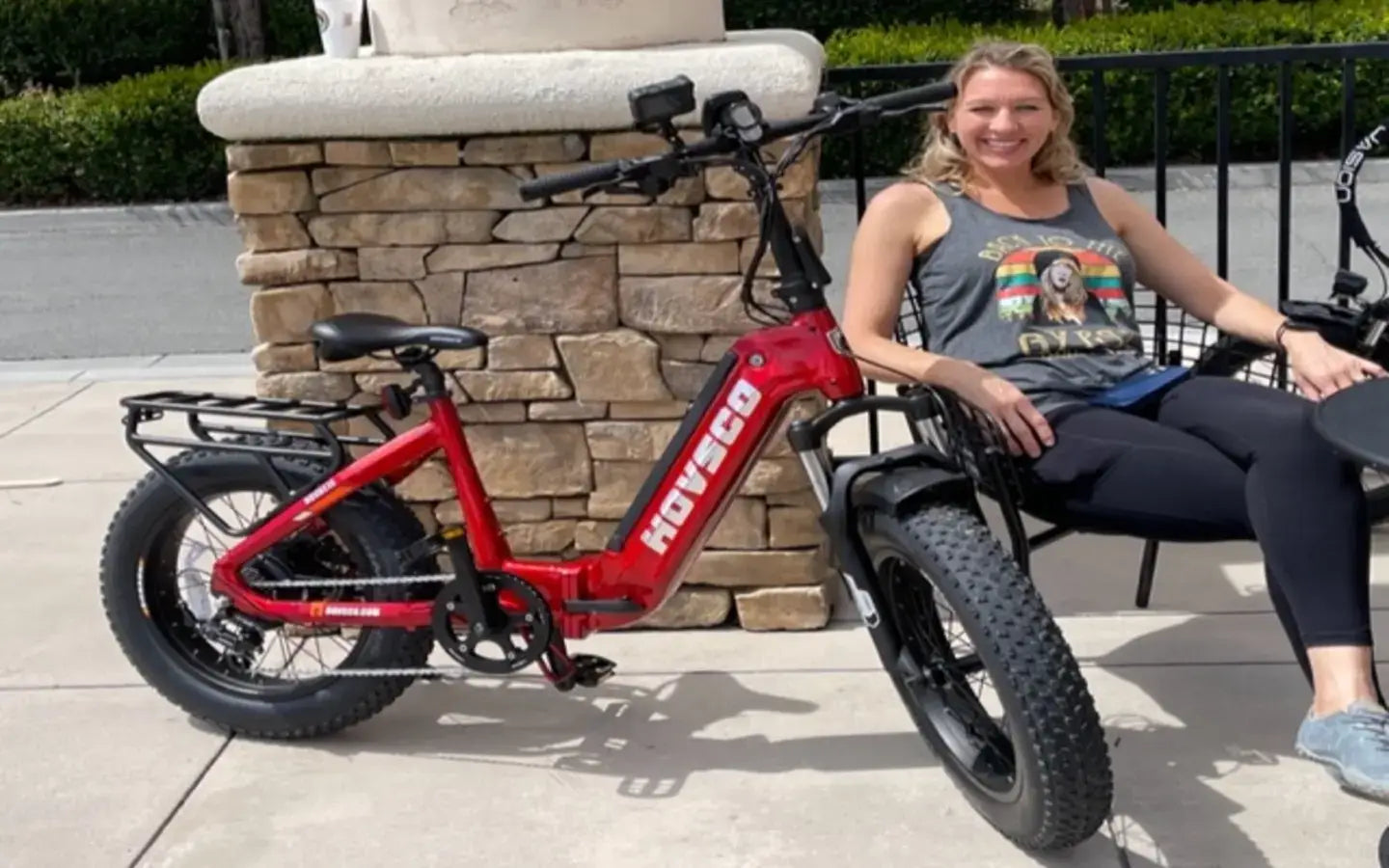
- by HOVSCO USA
How Fast Are Electric Bikes? Understanding E-Bike Speed Limits and Performance
- by HOVSCO USA
Electric bikes in 2025 typically reach top speeds ranging from 20 to 28 mph, depending on their class and motor power. Class 1 and 2 e-bikes are capped at 20 mph, while Class 3 e-bikes offer pedal assist up to 28 mph. High-performance models can exceed these speeds, sometimes reaching 35-40 mph or more, but such speeds often fall outside legal limits for street use. E-bike speed is also affected by rider effort, terrain, battery capacity, and motor efficiency.
Class 1 and 2 e-bikes provide pedal-assist and throttle support, respectively, up to 20 mph. Class 3 e-bikes, designed for faster commuting, offer pedal-assist up to 28 mph but generally exclude throttle control above 20 mph. These classifications determine where and how e-bikes can be used legally, influencing maximum speed allowances.
More powerful motors, typically ranging from 250W to 750W, enable faster acceleration and higher top speeds, especially on hills or with heavier riders. However, motor power alone does not define speed; factors like battery voltage, controller settings, and mechanical efficiency significantly influence actual speed and ride experience.
Terrain plays a crucial role; flat and smooth roads allow maximum speed, while hills and rough surfaces slow the bike. Rider weight and position influence motor load and aerodynamic drag. Weather conditions such as wind can either impede or aid speed. Proper tire type and pressure also optimize rolling resistance and contribute to sustained speeds.
Chart Title: Factors Influencing Electric Bike Speed
| Factor | Impact on Speed |
|---|---|
| E-bike Class | Legally capped speed by class |
| Motor Power | Higher wattage boosts acceleration |
| Terrain | Hills and roughness reduce speed |
| Rider Weight | Greater weight lowers top speed |
| Battery & Controller | Power delivery efficiency |
| Tire Type & Pressure | Rolling resistance and grip |
| Weather | Wind resistance/boost affects speed |
Top-class commuter e-bikes commonly reach 28 mph. Mid-range e-bikes typically top out at around 20 mph, suitable for urban commutes. High-end, custom-built or off-road e-bikes can push beyond 35 mph, but often require careful adherence to local laws to avoid penalties.
When selecting an electric bike, consider intended use, legal restrictions, and terrain. HOVSCO offers a range of e-bikes optimized for speed, power, and efficiency, covering class 1 to performance models. Prioritize models combining appropriately powered motors, efficient batteries, smooth controllers, and quality components to maximize speed and riding enjoyment safely.
“HOVSCO integrates advanced motor and battery technologies to deliver e-bikes that balance speed and safety within legal frameworks. We emphasize rider experience, ensuring swift acceleration and consistent power while maintaining energy efficiency and compliance. Our designs cater to diverse rider needs, supporting everything from daily commuting to higher-speed adventures.” — HOVSCO Product Engineers
Q: What is the typical top speed of an electric bike?
A: Most e-bikes reach between 20-28 mph depending on class and motor power.
Q: How does e-bike class affect speed?
A: Class 1 and 2 e-bikes are limited to 20 mph; Class 3 e-bikes provide assistance up to 28 mph.
Q: Can motor power alone determine how fast an e-bike goes?
A: No, terrain, rider weight, battery, and controller also influence actual speed.
Q: Are high-speed e-bikes legal everywhere?
A: Laws vary by region; higher speeds often require special registration or are prohibited.
Q: How can I maximize my e-bike's speed?
A: Maintain tire pressure, reduce weight, ride efficiently, and choose models with strong motors and good batteries.
Share:
What Are the 9 Important Benefits of Electric Bikes?
What Are the 6 Common Misconceptions About Ebikes?